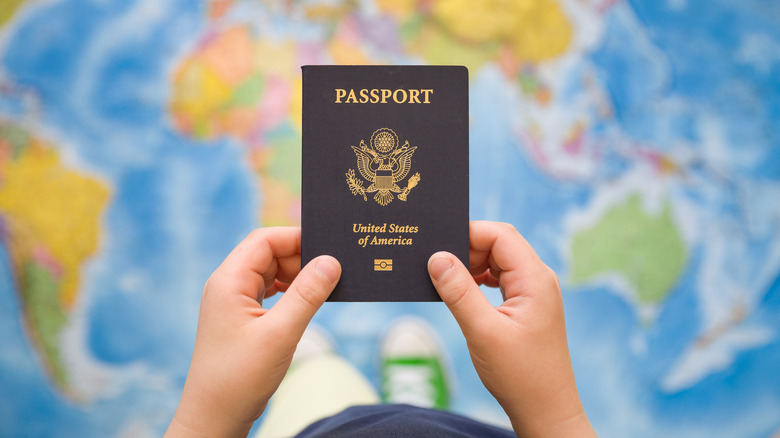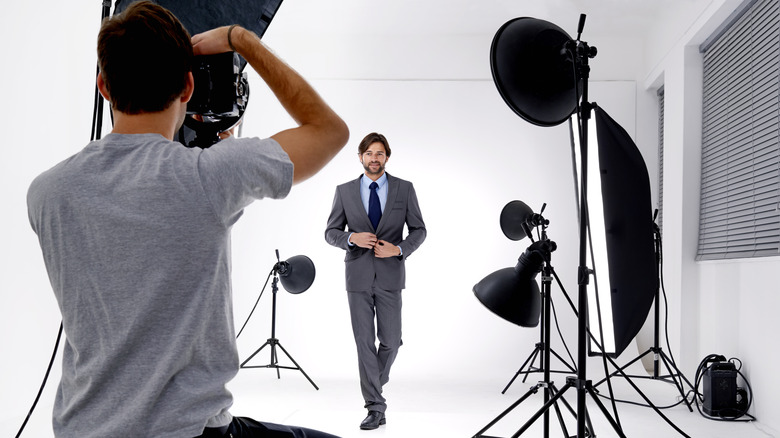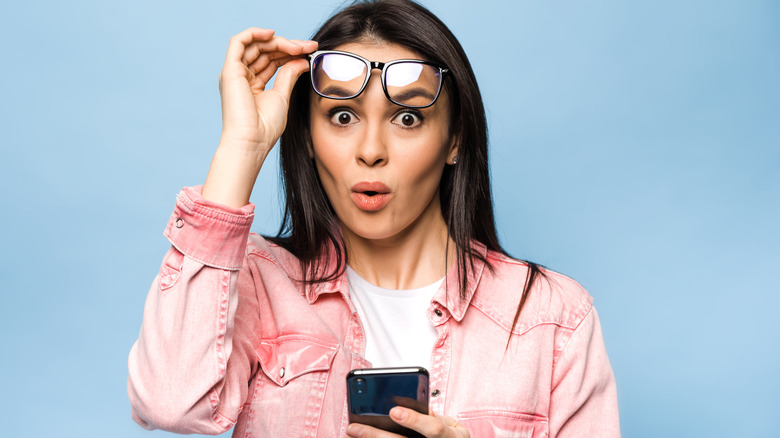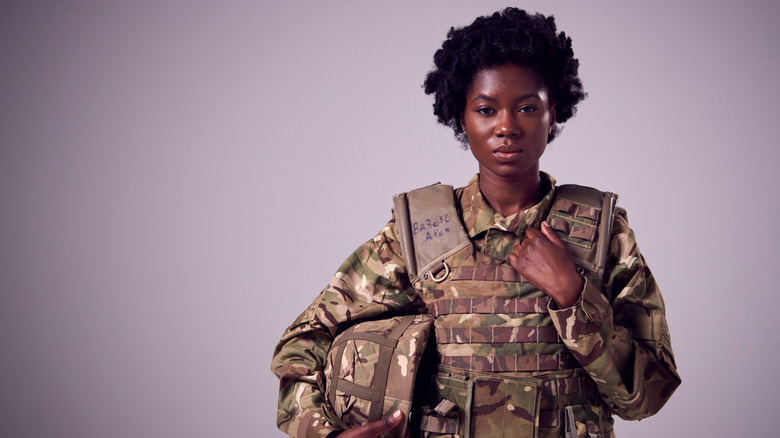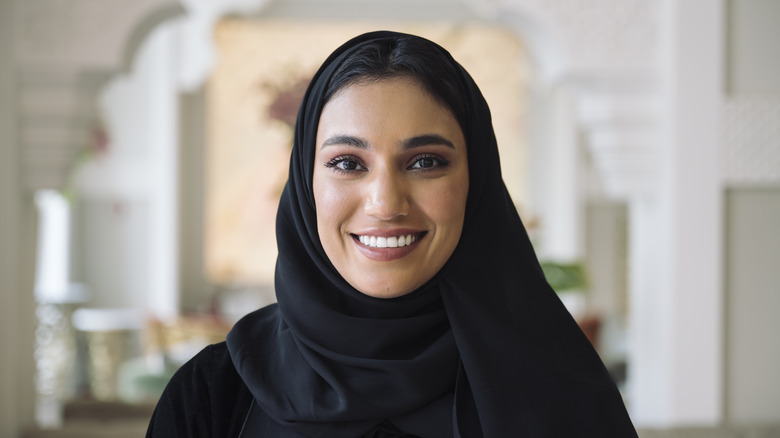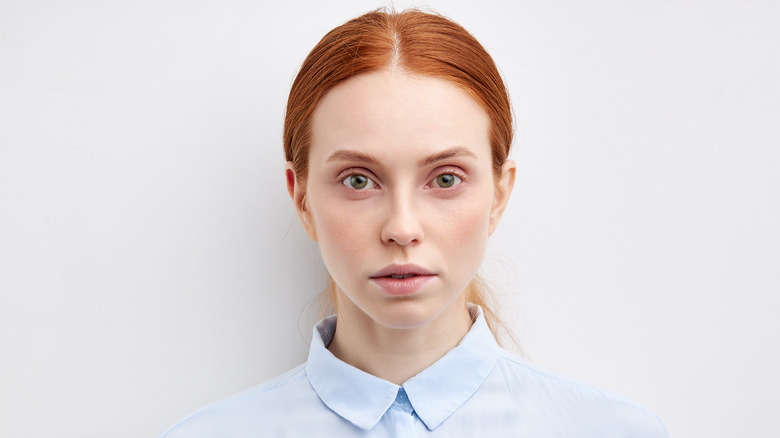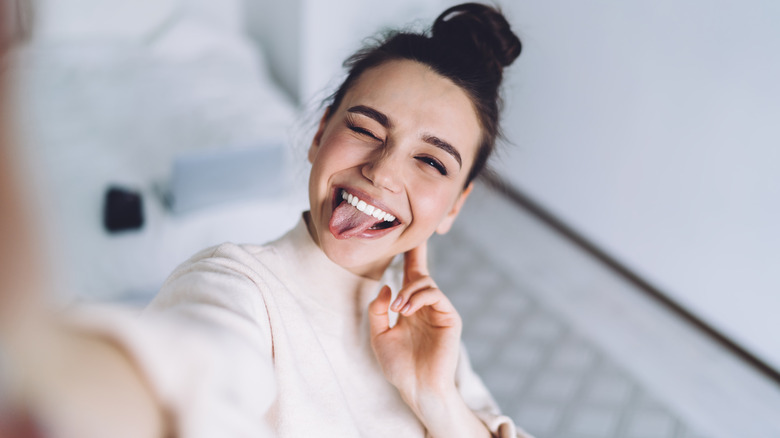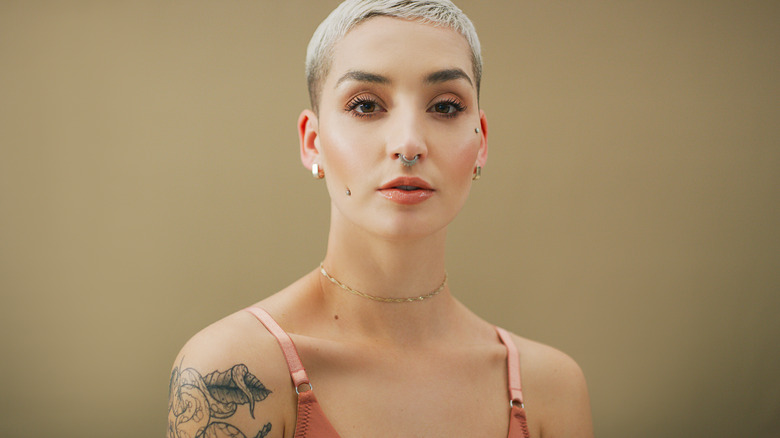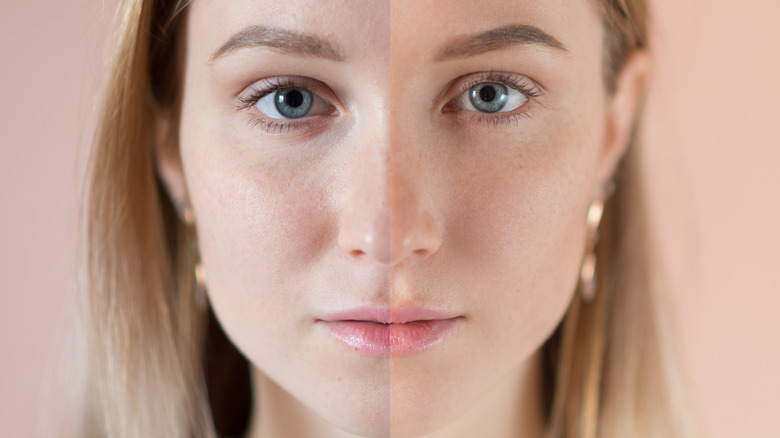10 Strict US Passport Photo Requirements You Must Follow
There are a few pictures that will haunt you throughout your life. No, we're not talking about that second-grade school picture with the lopsided bangs or last-minute bowl cut. Those can easily be burned and erased from your personal archives along with the accompanying yearbook. But one photo — your passport photo — will be with you for up to 10 years of your life. You'd best make it a good one.
Unfortunately, the likelihood of actually being able to pull off a decent passport photo is slim to none. This has nothing to do with your selfie abilities or capturing the best angle, though. The U.S. Department of State's many regulations concerning the official document make it nearly impossible for a passport photo to show off your best side.
There is no best camera angle or ideal lighting when it comes to these uninspired, sterile images. Instead, there is a set of very strict rules your headshot must adhere to, and not following them could get your travel plans thrown off course. We're here to help, though, and have laid out the many requirements that you need to follow without deviation when taking that dreaded passport photo.
White, plain Jane backgrounds only
We know it's tempting to spice up your otherwise dull and uninspired passport photo with a splash of color or style, but don't do it. Nothing will get your application thrown out faster than taking creative liberties. While the '90s may be back in style, the State Department won't look kindly on retro lasers or other psychedelic backdrop choices from that era.
In reality, even much less dramatic backgrounds could get your passport photo flagged for denial. Only a white or slightly off-white backdrop will get you on an international flight. Be cautious of any shadows, wrinkles, or inconsistencies on your backdrop as well, since they will also get your photo denied. If you plan on taking your own passport photo, you will need to ensure that your camera exposure is accurately adjusted to not make the image too bright or dark. Additionally, you will need to double-check your camera's white balance settings, since any hint of colorful hues or filters won't be accepted.
Taking your passport photo indoors, away from direct sun exposure, could help eliminate shadows. Be thoughtful when you decide what you are posing in front of as well, as glossy paint or other textured backgrounds could cause slight reflections. Using a sheet or light fabric is a go-to for some, but ensure there are no wrinkles and that it is spread taut for a consistent backdrop.
You cannot wear glasses in your passport photo, even if you wear them every day
Even if you wear glasses every day, you will either have to opt for contacts or take your glasses off to snap your passport picture. The U.S. State Department banned glasses from passport photos in November 2016, according to the Washington Post. Both prescription glasses and sunglasses will not be accepted for a passport photo, even if there is no glare from the lenses of your glasses.
If your current passport isn't expired and includes a photo of you wearing glasses before 2016, you don't have to apply for a new one just yet, according to a memo from the U.S. State Department. However, once your passport expires and you need to apply for a new one, those glasses will have to come off for the picture.
Glasses will only be accepted in passport photos for rare medical circumstances, according to the agency. In such cases, a doctor's signature will be required. But the agency notes that, absent a recent ocular surgery that requires glasses to protect the eyes, eyeglasses will not be allowed in photos.
Take off your Army green or camouflage
Camouflage and uniforms are not permitted in passport photos, according to the U.S. State Department. But while you may not be wearing your hunting gear for your picture, you may want to skip any green outfit altogether. Travel expert and YouTuber Nicholas Demski said he was not allowed to wear a military green shirt when he took his passport photo.
"One thing I learned is, make sure you aren't wearing any military green shirts," the content creator said on his YouTube channel, Nomad Lifestyle. "You cannot wear that in your passport photos, I found out. They made me put on a ridiculous shawl for my passport photo."
As for uniforms, those won't be accepted in passport applications, either. Even if your outfit is not technically a uniform, if it looks enough like one, it may not work, according to the U.S. State Department. Opt for a regular, plain T-shirt or button-down, instead.
No head coverings, except for religious or medical reasons
Your passport photo is meant to act as the best representation of what you look like on any given day, so your face must be clearly visible. While there are some important exceptions to this rule, your photo will not be accepted if you're wearing a hat or head covering. Similarly, your hair must be either pulled back away from your face or arranged in a way that does not obscure your features.
For the many Americans who wear head coverings daily for religious purposes, like a hijab or kufi, this requirement may raise some red flags. Don't worry, though, these individuals can still wear their religious attire in their passport pictures. Anyone who submits a photo depicting themselves in religious attire needs to also submit a signed statement confirming that your photo depicts daily religious attire. You will need to include a doctor's signed word that any medical gear worn in a photo is legitimate and constant as well.
You can't pose or smile too wide for your passport picture
It's tempting to put your best foot forward when you're standing in front of the camera, but when you're taking your passport photo, don't bother posing. All you need to do is look straight ahead, shoulders squared to the camera, and keep your eyes open, according to the U.S. State Department. That also means no cute head tilts or angled poses. Your head should be in the center of the photo with your shoulders visible, almost like a professional headshot.
In addition, you shouldn't say "cheese," or smile big for your passport photo. Your face should have a "neutral expression," according to the regulations. We know it's a little dreary, but save your big smiles for your destination.
No selfies allowed
It doesn't matter how good your selfie game is, the U.S. government doesn't want to see it in your passport. Killer self-portraits have their place on Instagram and Snapchat, but it's next to impossible to capture a passing passport photo in typical selfie fashion. You will be unable to reach the ideal distance between the camera and the subject with your arm alone, and your body will likely be displayed from the angle you're taking the photo.
The guidelines for passport photos state that someone else should take your photo, but there may be a way to get around that. Using a tripod is a solid choice if you don't have anyone else around who can help you out. If you finesse it just right, you may be able to get away with using a selfie stick. By maintaining good posture and a clear, open gaze straight at the camera, you just might be able to get a State Department-acceptable shot.
Your photo must be recent and look like present-day you
Chances are, you don't have a photo just lying around that will fit all the requirements for a new passport. Even if you do, though, you must use a recent photo of yourself. The U.S. Department of State requires photos to be no more than six months old. Don't let your application sit too long without submitting it, or you'll find yourself needing to go through the photo process all over again.
Additionally, you'll need to take a new photo if you've undergone any major changes to your appearance. Planning on getting that sick head tattoo you've always wanted? We're cheering you on, but schedule your tattoo appointment before your portrait shoot. Any major reconstructive or cosmetic surgeries, along with excessive weight fluctuations and gender transitions, are all causes for an updated passport picture.
Simply put, the photo must look like you. While haircuts, makeup, and most facial piercings still offer your full everyday appearance, considerable permanent changes will require an updated photo.
Sorry, no touch-ups
Everyone loves a good filter, but unfortunately, there's no place for them within your passport. In addition to not putting any kind of filter on your photo, you will also need to refrain from retouching anything. No need to feel self-conscious about any blemishes — we're all equals when it comes to our passport photos.
Even the most mundane-seeming edit could cause your photo to be rejected, like editing out red-eye. If your photo has an imperfection or quality issue that needs to be edited out, you will need to just take a new photo instead.
And remember that white background that's required? That has to be achieved in real life. You can't just cut the background out to make it appear as though you took your photo in front of a white sheet or wall. If you think you can pull a fast one and they won't notice, think again. There are a number of ways to tell if a photo has been altered, and you can bet the government can use them.
The kids are on their own
All passport photos must solely depict the person who the passport is for. This means that no matter how old a child is, they must appear alone in their picture. This box may be a hard one to check for some parents because they will not be able to hold their child for the photo.
When applying for a passport for your baby who can't yet sit up, their picture will need to be taken while they are lying down or propped up and supported. Spreading out a white blanket and laying your child on their back is a good strategy, but make sure you don't cast a shadow on the picture when you snap it. Another way to achieve an acceptable photo is to place the sheet on your child's car seat and place them inside. While minors should typically have their eyes fully open and be looking straight at the camera, infants are given some grace. Their eyes only need to be partially open and they do not need to be looking straight at the camera.
Most rules still apply to children of all ages, including the rule that says nothing can obscure the face. This means that pacifiers, right along with hats and bonnets, are a no-go. It may take some trial and error for a colicky baby to take an acceptable picture without the comfort of a parent's embrace or their paci — may good fortune and baby smiles be with you.
Make sure your photo is the correct size
Even if you've double and triple-checked that your photo has passed all the requirements mandated by the U.S. Department of State, you may still not be out of the woods. Depending on how you are submitting your passport application, you will need to adjust the size of your photo.
For those submitting their application in person or sending it in via mail, the photo must be a high-resolution 2-by-2 inch picture, with the head centered. It's worth noting that if your application is for a new passport rather than a renewal, you will need to submit it in person in the required size.
Photo requirements are a bit different for online passport renewals. Instead of a tiny cropped photo, you will need a JPEG that is at least 600-by-600 pixels. If you're applying online, you can use the U.S. State Department's photo tool to correctly crop your image. While your head should still be centered, there should be more space around you in an online photo to allow for cropping. It may sound tedious, but once you've completed this final step you're well on your way to international travel!
